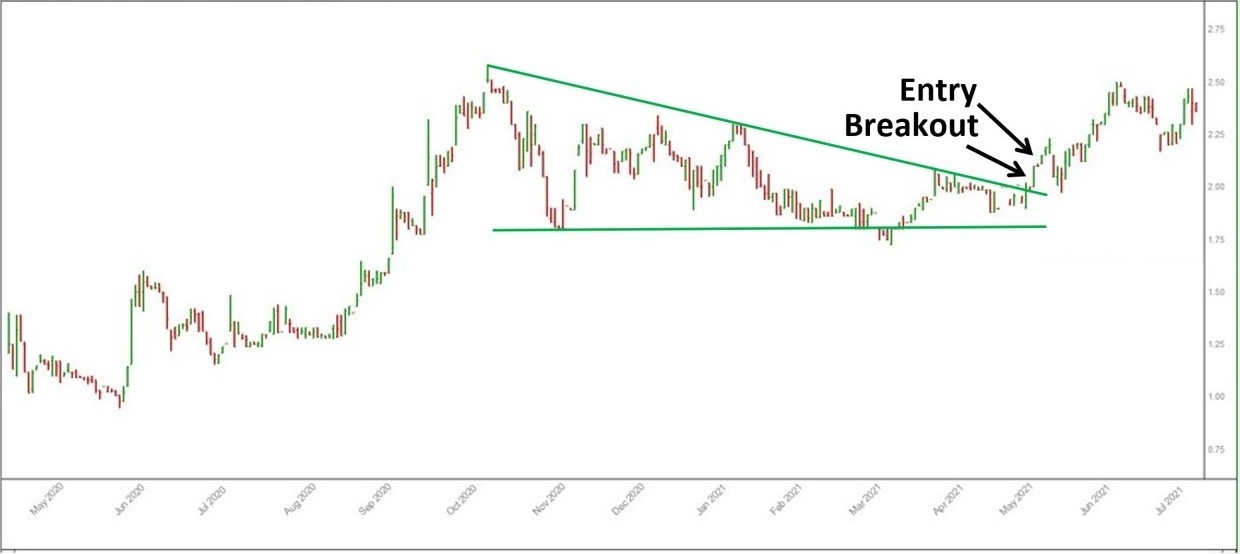Could a Sleep Disorder Propel SomnoMed (ASX:SOM) Higher?

Jason McIntosh explains why SomnoMed Ltd [ASX:SOM] could be a medical device company to buy now. The ASX small cap’s clinically proven appliance has huge potential demand. This interview appeared on the Ausbiz financial news channel on 23 June, 2021.
Host: Jason, tell us about SomnoMed.
Jason: SomnoMed is a medical device company with a market cap of around $190 million. Like many smaller companies, it has a relatively low profile and isn’t in the All Ordinaries.
The company provides treatments for sleep related breathing disorders. A primary focus is obstructive sleep apnoea (OSA), which affects around 9% of women and 25% of men.
Traditional treatment for OSA often involves a pressurised mask that people wear overnight. While this can provide relief, the inconvenience of a mask causes many people to cease use.
SOM has developed a treatment called Continuous Open Airway Therapy (COAT). This is a clinically proven oral appliance that helps keep the airways open when the user is asleep.
The big advantage of COAT is that it’s more comfortable and less invasive.
And the potential demand for the product is huge. SOM says the global addressable market for OSA is around $7 to $8 billion, with an annual growth rate of 6% to 8%.
The company operates in the Asia Pacific Region, North America, and Europe. And to date, their products have treated over 615,000 people in 28 countries.
Financially, the company appears to be doing well…
Revenue for the last half was down 7% to $30.8 million, with most of the drop attributable to the North American market. But revenue in Europe and Asia Pacific saw a slight rise.
Overall, the company was able to maintain their gross margin percentage, and reported 7% rise in EBITDA (earnings before interest, tax, depreciation, and amortisation) to $3.2 million.
While COVID continues to have an impact, management reports a big jump in activity during the latest quarter. They say this points to an improving outlook for the remainder of 2021.
A potential benefit from COVID is that it could reduce competition. SOM operates in a highly fragmented market and some of the smaller players could come under financial stress.
This is what the chart looks like:

The stock came to my attention during my daily scans. It caught my eye because it was beginning to regain upward momentum after a period of inactivity.
SOM had a strong rally in the second half of 2020. The shares reached a peak in October and then settled into a seven-month trading range. You’ll see the range on the chart.
Trading ranges are often periods of choppy back-and-forth price movement. The lack of consistent momentum makes them tricky to trade. I believe the best strategy is to simply avoid them.
But they often lead to excellent opportunities…
You see, a breakout from a range signals the potential start of a new trend. Positive news often accompanies an upward break — the opposite usually occurs when prices break lower.
A strategy for these situations is to buy shortly after a breakout. The advantage of this is that you’re possibly getting into a new trend early. This helps to maximise upside potential.
I sent a buy signal to members of my Motion Trader service at $2.17 in May.
SOM has high growth potential over the next few years. I believe the shares could rise significantly. It also has a strong balance sheet with $19.3 million in the bank (as of 31 March).
Finally, two board members have recently been buying shares. And interests associated with one of them owns around 25% of the company. I believe this is a sign of confidence in the business.

